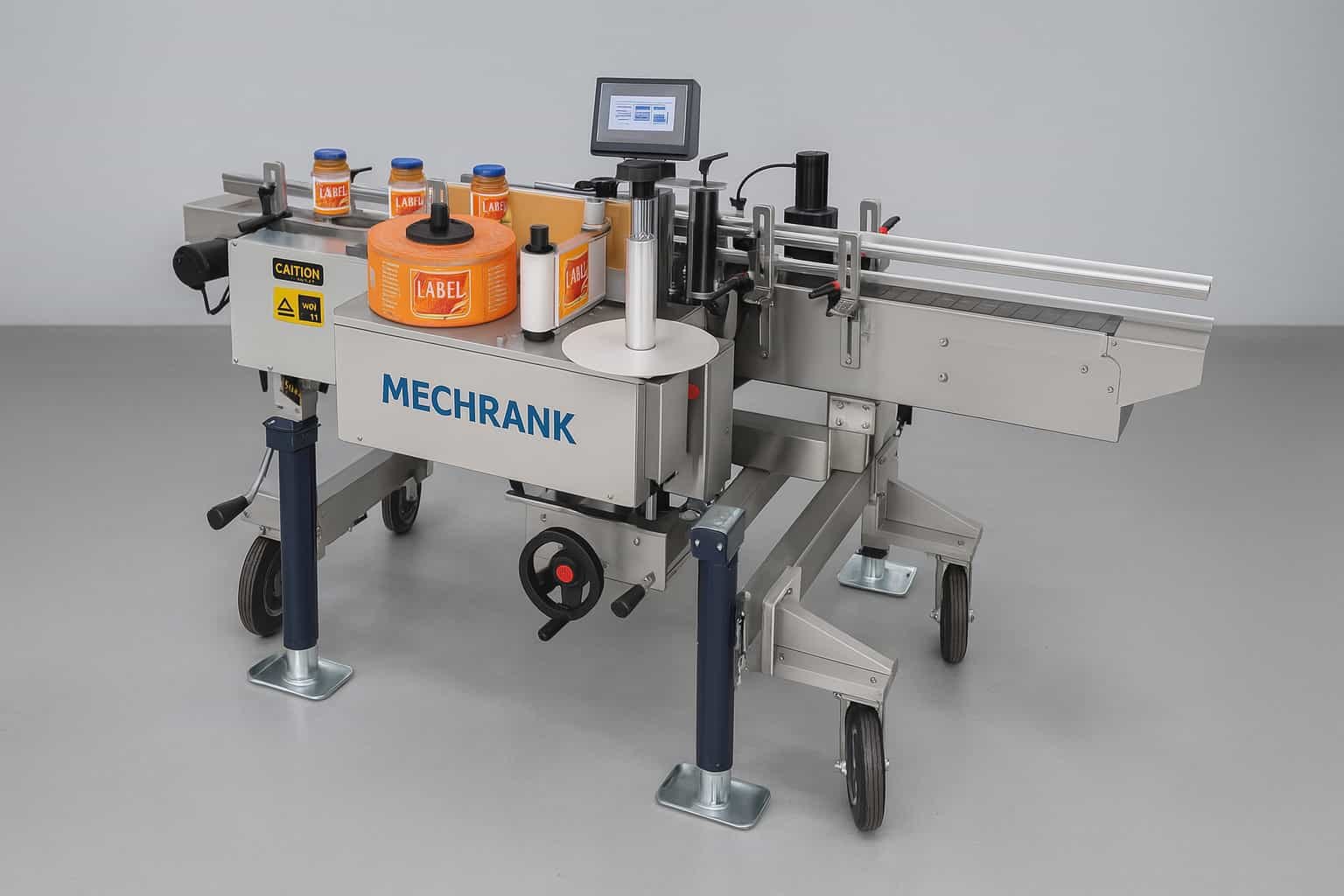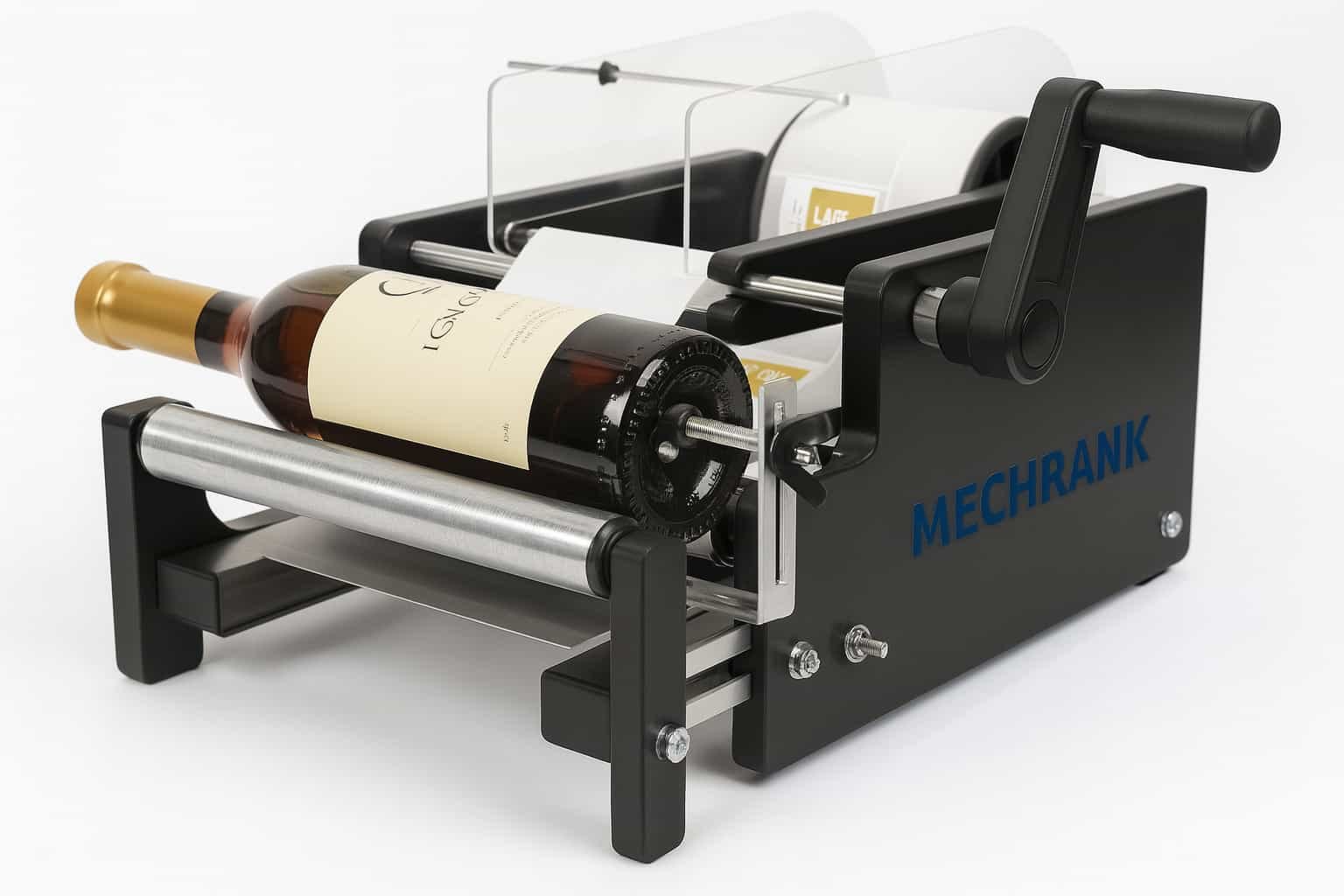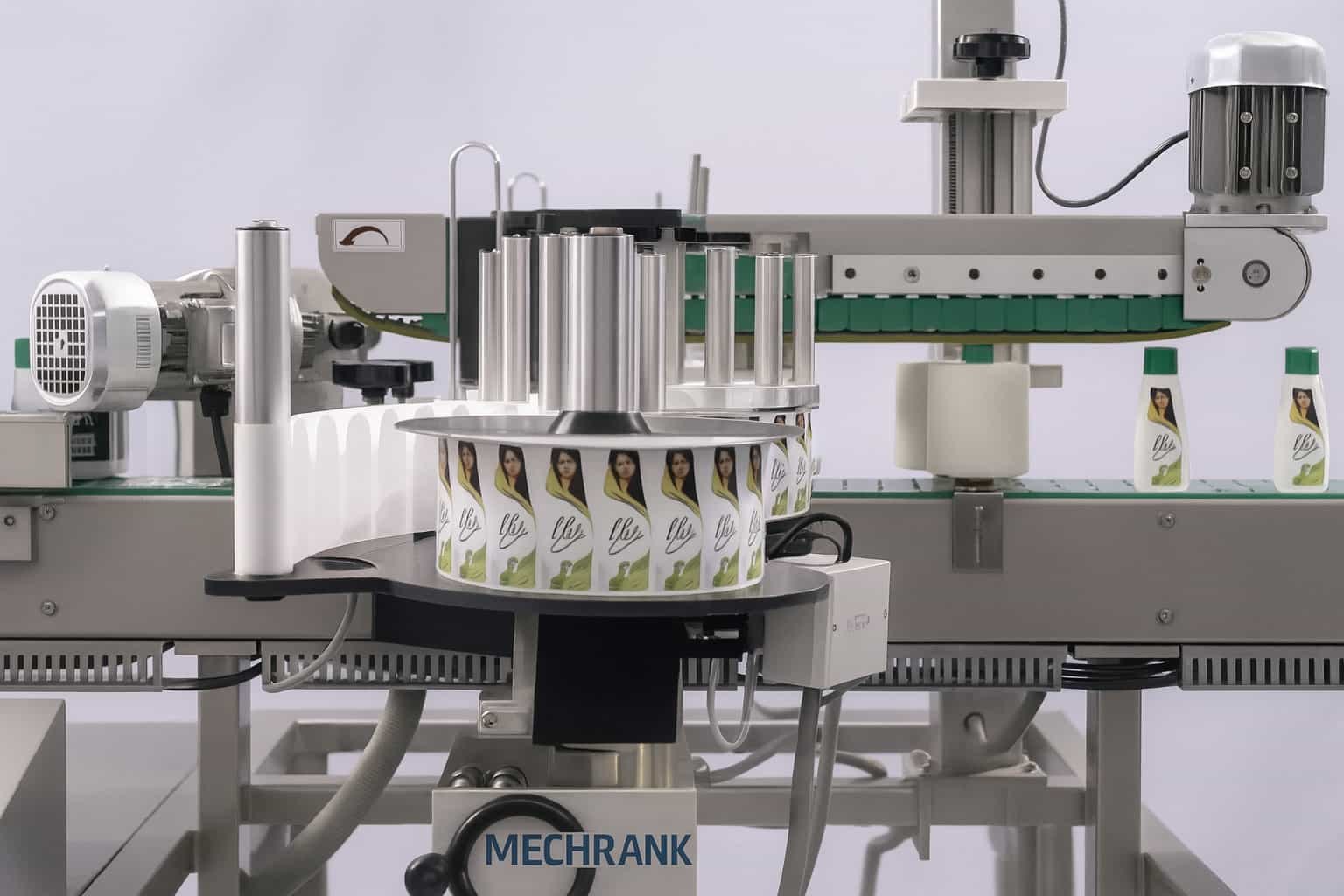What is a Bottle Labeling Machine?
A bottle labeling machine is an automated device designed to apply labels to bottles accurately and efficiently. These machines are essential in industries like beverages, pharmaceuticals, and cosmetics for branding and regulatory compliance.
Key Features of Bottle Labeling Machines
- Automated Label Application: Ensures consistent and precise placement of labels.
- Speed and Efficiency: Capable of labeling thousands of bottles per hour.
- Versatility: Can handle various bottle sizes and shapes.
- Label Types: Supports different label types, including pressure-sensitive, shrink-sleeve, and glue-based labels.
- Integration: Easily integrates into existing production lines.
How Bottle Labeling Machines Work
- Bottle Feeding: Bottles are fed into the machine via a conveyor.
- Label Dispensing: The machine dispenses labels from a roll or stack.
- Label Application: Labels are applied to the bottles using rollers or brushes.
- Quality Control: Sensors check for correct label placement and alignment.
- Output: Labeled bottles are collected for further processing or packaging.
Bottle labeling machines streamline the packaging process, ensuring high productivity and consistent quality.
How Does a Bottle Labelling Machine Work?
A bottle labelling machine automates the process of applying labels to bottles. It ensures consistent placement, speed, and accuracy, which manual labelling cannot achieve.
Key Components and Functions:
- Feeding System: Bottles are fed into the machine via a conveyor belt.
- Label Application: Labels are dispensed from a roll and applied to the bottles using rollers or brushes.
- Alignment Sensors: These ensure the label is positioned correctly on each bottle.
- Adhesion: Pressure or heat is applied to secure the label firmly.
- Output: Labelled bottles are then discharged for packaging.
Benefits:
- Efficiency: Speeds up production lines.
- Consistency: Ensures uniform label placement.
- Versatility: Can handle various bottle shapes and sizes.
By automating label application, these machines enhance productivity and maintain high standards of labelling quality.
What is the principle of labeling machines?
Labeling machines operate on the principle of accurate and efficient label application to products. They use sensors and control systems to position and affix labels precisely, ensuring consistency and reducing manual labor.

How Labeling Machines Work:
- Product Detection: Sensors detect the presence of a product.
- Label Dispensing: The machine dispenses a label from a roll or sheet.
- Application: The label is applied to the product using a roller, brush, or tamp.
- Verification: Sensors check for correct label placement.
Key Components:
- Sensors: Detect product and label positions.
- Control System: Manages timing and application.
- Dispensing Mechanism: Feeds labels to the application point.
- Application Tool: Applies label to product.
Labeling machines enhance productivity and accuracy in packaging processes, crucial for industries like food, pharmaceuticals, and consumer goods.
What are the advantages and disadvantages of bottle labeling machines?
Bottle labeling machines offer high efficiency and consistency in labeling, which significantly reduces manual labor and human error. These machines can handle large volumes swiftly, ensuring uniformity and precision in label placement. However, they require a substantial initial investment and regular maintenance, which can be costly for small businesses.

Advantages:
- Efficiency: Automates the labeling process, increasing speed and productivity.
- Consistency: Ensures uniform label placement, enhancing product appearance.
- Scalability: Can handle large volumes, suitable for growing businesses.
- Reduced Labor Costs: Minimizes the need for manual labor, lowering operational costs.
Disadvantages:
- High Initial Cost: Significant upfront investment in machinery and setup.
- Maintenance: Requires regular maintenance and potential repair costs.
- Complexity: May need skilled operators for setup and troubleshooting.
- Space Requirement: Occupies considerable space in the production area.
In conclusion, bottle labeling machines can greatly enhance operational efficiency and product consistency but come with substantial costs and space requirements.
How do you maintain a bottle labeling machine?
Maintaining a bottle labeling machine involves regular cleaning, lubrication, calibration, and inspection of key components to ensure optimal performance and longevity.

- Cleaning:
- Clean the machine daily to remove adhesive residues and dust.
- Use appropriate solvents for sticky parts.
- Lubrication:
- Lubricate moving parts weekly to prevent wear and tear.
- Follow the manufacturer’s guidelines for lubrication points.
- Calibration:
- Calibrate sensors and label applicators monthly.
- Ensure labels are applied accurately and consistently.
- Inspection:
- Inspect belts, rollers, and gears for signs of wear or damage.
- Replace any worn-out components promptly.
Regular maintenance ensures the machine operates efficiently, reduces downtime, and extends its lifespan.


